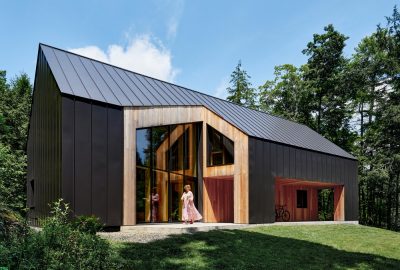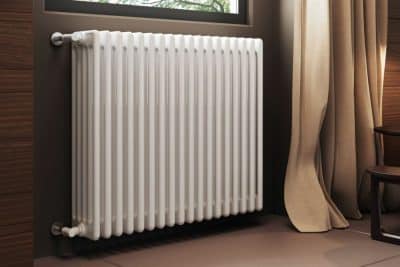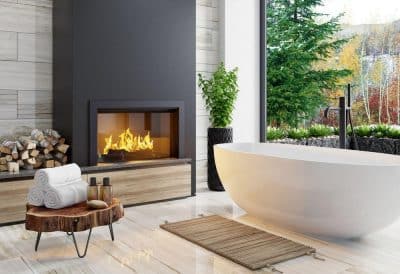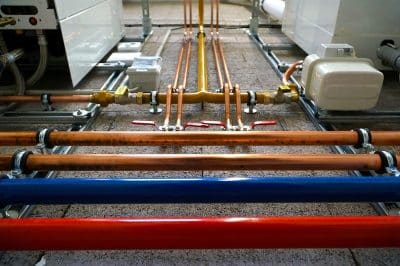Choosing the right flooring is key to creating a beautiful and functional bathroom. Bathroom floors endure significant moisture and require materials that are water-resistant, easy to clean, durable and slip-resistant. Aesthetics and maintenance need also play a role when selecting bathroom flooring.
Tile – A Classic Bathroom Flooring
Tile is one of the most popular choices for bathroom floors owing to its waterproof properties, durability, and timeless beauty.

- Ceramic and Porcelain Tile
Made from clay and other natural materials, ceramic and porcelain tiles are highly water-resistant and easy to clean. Porcelain offers greater durability and stain-resistance than ceramic. A vast range of styles, colors, shapes and designs are available. Smaller tiles can help reduce grout lines and create a seamless look. Larger format tiles create a sleek, contemporary aesthetic.
- Natural Stone Tile
Quarried from materials like travertine, marble, limestone or slate, natural stone tiles add luxury and visual warmth. However, stone can be more porous and requires sealing to prevent water damage. Marble offers a timeworn elegance but is softer compared to other natural stones.
Travertine brings an earthy, rustic charm but can be prone to pitting. Slate delivers an eye-catching multicolored appearance but can chip easily.
- Glass Tile
With their luminous and shimmering finish, glass mosaic tiles impart a unique look to bathrooms. Smaller format glass tiles help create cohesive designs. Larger glass tiles can make spaces appear more expansive. Glass tiles need low maintenance but require a waterproof backing.
Waterproof Vinyl – Affordable yet Stylish
Vinyl is a versatile, low-maintenance and cost-effective flooring choice for bathrooms.

- Luxury Vinyl Tile
Mimicking materials like wood or stone at a fraction of the cost, luxury vinyl tiles are stunning and realistic. The ultra-durable vinyl surface is waterproof and scratch-resistant. Grout is not required but can accentuate tile designs. Luxury vinyl is comfortable, absorbs sound and has good insulation properties.
- Vinyl Sheet Flooring
Offering a seamless, uniform look, sheet vinyl flooring comes in diverse solid colors or patterns. The flexible sheets can be cut to size and installed smoothly over subfloors. With proper installation, vinyl sheets provide a completely watertight flooring solution. They are affordable, easy to clean and quiet underfoot.
Less Common Yet Practical Options
Along with tile and vinyl, a few other bathroom flooring materials also deserve consideration:
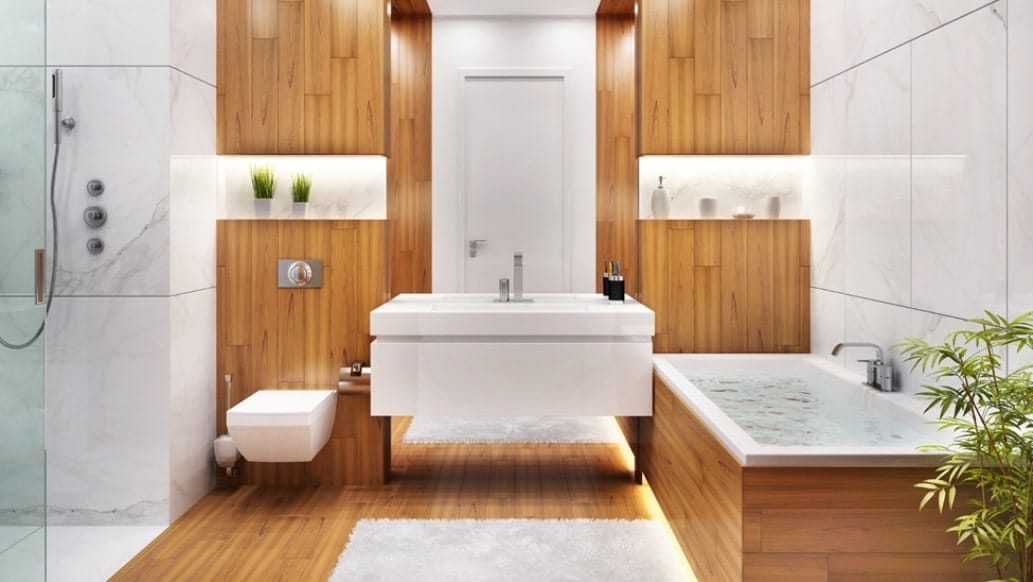
- Bamboo Flooring
In terms of appearance, bamboo floors lend a clean, contemporary edge similar to hardwood yet offer greater moisture resistance. Factory finishes provide water protection but regular sealing is still required. Strand-woven bamboo is the most durable format.
- Rubber Flooring
Offering cushioning, sound absorption and traction, rubber bathroom floors are durable and completely waterproof. Styles range from roll/sheet form to interlocking rubber tiles. Easy installation and maintenance make rubber suitable for DIYers. Most rubber flooring can handle radiant floor heating.
- Cork Tiles
The natural moisture-wicking ability of cork makes it suitable for bathrooms. Sound and temperature insulating properties add comfort underfoot. Cork needs to be properly sealed to prevent water damage. Available in various colors, patterns and finishes.
By selecting the right flooring, you can add both beauty and utility to your bathroom space based on your needs.
Key Considerations for Bathroom Flooring
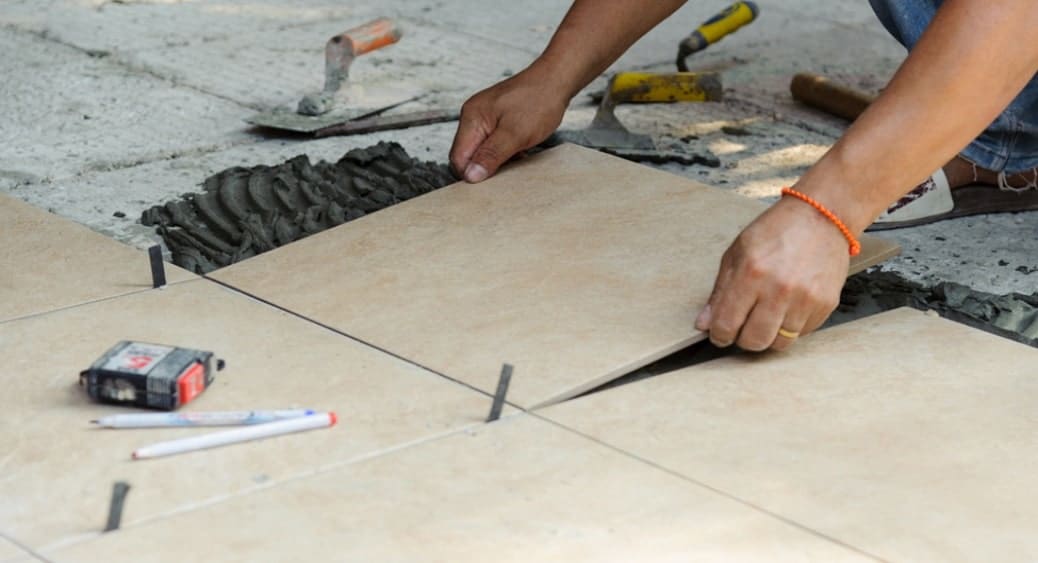
Maintenance Needs
Floors like ceramic, porcelain or vinyl need only basic sweeping and mopping for cleaning. More porous choices like bamboo, stone or cork require frequent sealing and can be moderately high maintenance.
Slip Resistance
In high moisture areas, slip-resistant floors are vital for safety. Porcelain, rubber, slate and textured vinyl offer good traction. Tiles with rough surfaces or grout lines improve grip.
Comfort and Noise Reduction
For comfort underfoot, materials like cork, bamboo, rubber and vinyl provide good insulation. They also absorb noise and echo. Tile and stone can get cold and be noisier when walked on.
Costs
Sheet vinyl and vinyl tiles cost $2-5 per sq.ft. Ceramic and porcelain tiles run $5-20 per sq.ft. Pricier options are $10-30 per sq.ft for stone tile, glass tile, bamboo or rubber floors.
Choosing bathroom floors based on factors like lifestyle, usage, aesthetics and budget allows you to create your perfect functional oasis.
Trends in Bathroom Flooring
Bathroom flooring trends keep evolving each year alongside innovations in materials and design. Here are some popular current trends:
Large Format Tiles
Oversized tiles ranging from 12×24 inches to huge 60×120 slabs are a major trend. Large tiles help bathrooms feel more expansive and cohesive. Popular in minimalist, modern designs. Adds a dramatic statement.
Bold Colors and Patterns
Vibrant colors and eye-catching geometric or nature-inspired patterns like chevron, herringbone or floral designs enliven bathrooms. Vivacious hues and expressive motifs create focal points.
Wood-look Flooring
The warmth and texture of wood is desirable but moisture-prone. Luxury vinyl planks realistically mimicking oak, walnut and other wood looks bring the appeal without the maintenance issues.
Moroccan-inspired Tile
Intricate mosaic patterns and colorful motifs influenced by Moroccan architecture make a bold style statement. Often seen in conjunction with metallic accents and mirrors.
Brick Flooring Visuals
The industrial chic, rustic vibe of brick is fashionable for urban loft-style bathrooms. Porcelain tiles digitally printed with realistic brick patterns offer the look without seams or uneven surfaces.
Natural Stone Extensions
Quartzite, terracotta, limestone and other natural stone visuals being used on walls and vanities provide cohesive extensions to stone tile floors. Adds to the earthy spa-like ambiance.
Eco-Friendly Bathroom Flooring
Along with aesthetics, eco-conscious homeowners may also prioritize sustainability when selecting bathroom flooring:
Natural Materials
Sustainably-harvested bamboo, reclaimed wood, natural linoleum and renewable cork are excellent green options. They emit minimal VOCs and can be safely composted at end of life.
Recycled Content
Seeking vinyl, ceramic or rubber flooring containing recycled plastic, glass or rubber helps reduce landfill waste. Most are recyclable at end of use too.
Low VOC Installation
Using low-VOC adhesives and sealants improves indoor air quality. Letting materials off-gas before installation also minimizes emissions.
Local Sourcing
Choosing materials manufactured and sourced locally reduces the carbon footprint from transportation. Supporting responsible local businesses is an added benefit.
Durability
Long-lasting choices like porcelain, rubber and vinyl minimize replacement needs. This reduces waste and environmental impacts of production.
Energy Efficiency
Insulating floors like cork and bamboo provide energy savings by retaining heat. This reduces energy usage for home heating.
By keeping sustainability in mind, beautiful bathrooms can be created that are both eco-conscious and elegantly functional. The right flooring choice goes a long way in crafting a bathroom that meets both practical needs and design aspirations.


